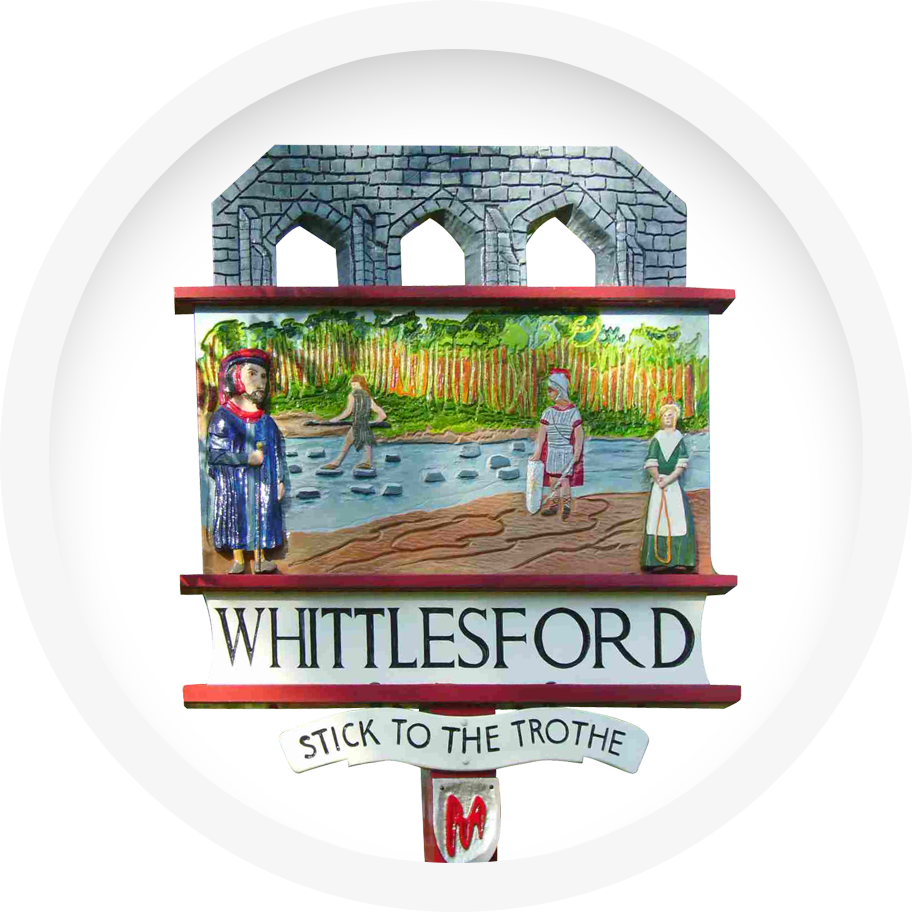Robert Henry Chapman of Whittlesford – Killed D Day – 6th June 1944
ROBERT HENRY CHAPMAN of Whittlesford
killed D Day 6th June 1944
Robert Henry Chapman was a Marine aged 19 years and 1 month when he died on D-Day, 6th June 1944. His name is on the new British Normandy Memorial in France and this year, the 80th anniversary of the landings, a new plaque will be added which will tell his story and can be seen on the following link: https://www.britishnormandymemorial.org/normandy-story/robert-henry-chapman/
The plaque at the British Normandy Memorial, France, with the QR code which tells his story.
The British Normandy Memorial is the only memorial in Normandy listing all the names of the 22,442 British military personnel who died on D-Day and during the Battle of Normandy.
This year from 21st April to 31st August 2024, the British Normandy Memorial in France together with “Standing with Giants” are displaying 1,475 silhouettes of soldiers to reflect the number of British servicemen who lost their lives on D-Day itself.
Robert was born on 2nd May 1925, the son of Reuben Arthur and Louisa Emma Chapman nee Day. Louisa was born in Hildersham. Robert was the youngest of 4 children having 2 sisters, Millicent Louisa and Olive May who both later married and left the village. Sadly, his older brother William Arthur George died in 1948 aged 28. His parents and brother are buried in the village cemetery. His father’s sister was Alice who married Percy Overhill, who was killed in WW1. Alice and Percy’s son Geoffrey joined the RAF and was killed in 1943 so of the 8 village residents who died in WW2 these 2 came from the same family.
Robert’s family had moved from Radwinter, Essex between 1861/71 and initially lived in Orchard Terrace in Whittlesford. In 1890 Robert’s grandfather Reuben purchased “Sheads” in the High Street where the family were still living at the outbreak of WW2. In the book “Whittlesford Recalled” originally published in 1977, there is a photograph of the house, and it states that this is “where the first Co-op was started by Reuben Chapman”. The earliest Chapmans were blacksmiths but according to the 1939 Register, Robert’s father Arthur Reuben was a farmer and carrier in addition to being a Special Constable and Robert was a 14-year-old newspaper boy. He attended the village primary school, now William Westley School, from 16 September 1929 leaving on 29 July 1936 to move to Sawston Village College where he is commemorated on a memorial plaque outside the college offices. At the time of his death, he was too young to vote as the age for voting was 21 years.
Robert had his 18th birthday on 2nd May 1943 and joined the marines soon after. He had previously worked at Pearce Mill in Kings Mill Lane, Great Shelford, a small water mill producing flour, grinding corn from local farmers and supplying shops etc. Robert’s job there is unknown.
THE WAR
At first Robert was posted to HMS Copra, a shore-based frigate used for admin purposes for men who had not yet been assigned to a ship. As planning for D-Day increased he was posted to HMS Turtle, another shore-based frigate, but one that was used for training personnel who would be part of Operation Neptune, the seaborne assault phase of Operation Overlord. Once his training was complete, he was posted to 698 LCM Flotilla. The LCM (Landing Craft Mechanised) could carry a tank, up to 100 men or a large quantity of cargo. Due to its size the LCM would have made its own way across the Channel rather than being carried on one of the larger landing ships. The flotilla was part of Force G which landed troops on Gold Beach.
The landing time for the British troops on D-Day was set at 7.30am, one hour after the Americans at Omaha Beach.
According to the eye-witness report of 2 survivors Robert was on LCM 193, part of the 698 Flotilla. At approximately 9am on 6th June 1944, they were approaching King Red Beach, part of Gold Beach, and whilst trying to run onto the beach to unload beach roadway the craft hit a mine and sank. The crew were taken off the LCM by an LCA (Landing Craft Assault) and whilst trying to get clear the LCA blew up and Robert was injured. He died of his wounds later in the day. Initially he was buried in Ver-sur-Mer but was reburied in Bayeux Cemetery on 3 February 1945. Grave XIV.L.13. British Normandy Memorial Location – Column 1.
The last line on the new plaque reads, “His memory is a keepsake”. This is the first line of the inscription on his gravestone which would have been chosen by his family.
You can find out more about the British Normandy Memorial Trust, which has recently announced that the King has become its Patron, by logging onto: www.britishnormandymemorial.org where it also gives details of how to become a Guardian.
Written by Karen Wright
My thanks to all those people, both local and national, who have helped me find the story of Robert Henry Chapman
I can be contacted at:





